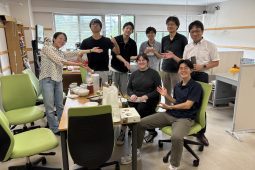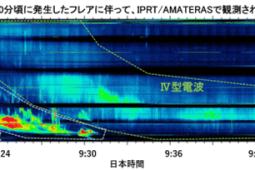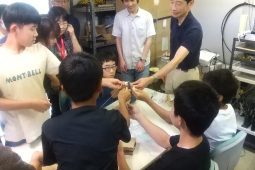PPARC セミナー (2024/11/08)

PPARC セミナー (2024/11/08)
(1) Chizuru Nose
[Title]
Influence of the solar wind on the hydrogen airglow in the Venusian upper atmosphere observed by Hisaki and VEX
[Abstract]
Understanding the mechanisms of variability in Venus’s upper atmosphere is crucial for comprehending the evolution of Venus’s atmosphere and climate change. The upper thermosphere of Venus is exposed to solar ultraviolet radiation and the solar wind, while the lower region is influenced by atmospheric waves propagating from the lower atmosphere. However, the mechanism of this variability is not fully understood. The airglow of hydrogen atoms on Venus primarily occurs at thermospheric altitudes and can be observed at extreme ultraviolet wavelengths. In this study, we conducted hydrogen atomic emission intensity data in Venus’s thermosphere, to investigate the effects of the lower atmosphere and solar activity on Venus’s thermosphere. By combining data from the Hisaki , which observes Venus, and particle measurement data from the European Venus exploration mission, Venus Express, we analyzed trends in these fluctuations. As a result of this analysis, we confirmed for the first time that the column density of hydrogen in Venus’s atmosphere increased by about 10% over a few days when high-speed solar wind arrived near Venus. We are currently developing several hypotheses about the mechanism of this phenomenon and are conducting analyses on the altitude distribution of Venus’s Ly-α emission intensity during the same observation period using SPICAV aboard Venus Express to see if a quantitative explanation is possible. In this seminar, I will present the results and interpretations of our analysis so far, as well as future challenges.
(2) Hiroaki Misawa
[Title]
Long term variations of Jupiter’s auroral radio emission – II
[Abstract]
In order to investigate control factor(s) of Jupiter’s long-term magnetospheric variations, we have investigated occurrence features of Jupiter’s auroral radio emission using the radio wave data for more than 25 years (1995~) observed by the WIND satellite. We have derived occurrence probabilities from the data observed in the frequency range of 1 to about 14MHz around Jupiter’s opposition periods. The results are interesting; i.e., the yearly occurrence probabilities show almost monotonous decrease from 1995 to 2005, then gradual increase from 2005 to 2012, but change to somewhat complex nature with increase and decrease for non Io-related components. It does not seem to correspond to simple variations of De and solar and/or solar wind activities those have been discussed as plausible causalities, but implies that some other or multiple causalities control the long term variations. In the seminar, we will discuss possibility of other causalities including Io’s volcanic activities.





